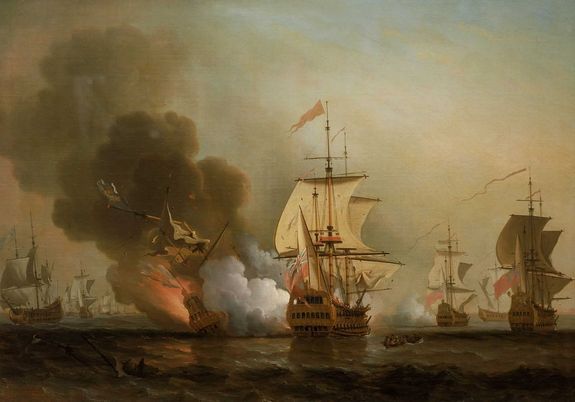
Ancient Spanish shipwrecks and tree-ring data have revealed an unusual low in Hurricane activity during the "golden age of piracy," new research suggests.
This lull in hurricanes, which occurred during the 18th and 19th centuries, may have been partly caused by a drop in sunspot activity, which reduced the solar radiation reaching the Earth, the researchers found.
"We're the first to use shipwrecks to study hurricanes in the past," lead author Valerie Trouet, a dendrochronologist at the University of Arizona Laboratory of Tree-Ring Research, said in a statement. "By combining shipwreck data and tree-ring data, we are extending the Caribbean hurricane record back in time, and that improves our understanding of hurricane variability." [A History of Destruction: 8 Great Hurricanes]
The new data could also help researchers understand how hurricane patterns will change as the climate warms, the researchers said.
Trouet said she and her colleagues first got the idea while at a conference for tree-ring researchers. At that meeting, Trouet mentioned that the National Hurricane Center began tracking Caribbean hurricanes only in 1850, making it hard to understand how climatic change had affected hurricane season. But one of her colleagues, dendrochronologist Grant Harley of the University of Southern Mississippi in Hattiesburg, noted that in the Florida Keys, people kept tree-ring data going back to 1707. And because hurricanes can stunt trees, hurricane intensity can be gleaned from those tree rings.
Then another colleague, Marta Domínguez-Delmás of the University of Santiago de Compostela in Lugo, Spain, noted that she dated old shipwrecks by analyzing the tree rings in the wood found underwater. The team wondered whether perhaps tree-ring data from Caribbean shipwrecks could push the region's hurricane history further back in time.
The researchers dug up classic books — such as "Shipwrecks in the Americas: A Complete Guide to Every Major Shipwreck in the Western Hemisphere" (Dover, 2011) and "Shipwrecks of Florida: A Comprehensive Listing" (Pineapple Press, 2015) — to amass a detailed record of Caribbean shipwrecks.
Sign up for the Live Science daily newsletter now
Get the world’s most fascinating discoveries delivered straight to your inbox.
From there, the scientists analyzed the ship logs to identify Spanish ships that wrecked during hurricanes between 1495 and 1825.
Combined, the hurricane data from historical accounts, as well as tree ring data from actual Caribbean shipwrecks, revealed the same trend: a 75 percent drop in the number of hurricanes between 1707 and 1825. This was a period when few sunspots occurred, known as the Maunder Minimum. Without these sunspots, Earth received fewer rays of sunlight, leading to a cooler Northern Hemisphere, the researchers reported Monday (March 7) in the journal Proceedings of the National Academy of Sciences.
Understanding how changes in heat affected the hurricane seasons in the past could help with regional hurricane-prediction models in modern-times, the researchers said.
"We're providing information that can help those models become more precise," Trouet said.
Follow Tia Ghose on Twitterand Google+. Follow Live Science @livescience, Facebook & Google+. Original article on Live Science.

Tia is the managing editor and was previously a senior writer for Live Science. Her work has appeared in Scientific American, Wired.com and other outlets. She holds a master's degree in bioengineering from the University of Washington, a graduate certificate in science writing from UC Santa Cruz and a bachelor's degree in mechanical engineering from the University of Texas at Austin. Tia was part of a team at the Milwaukee Journal Sentinel that published the Empty Cradles series on preterm births, which won multiple awards, including the 2012 Casey Medal for Meritorious Journalism.











